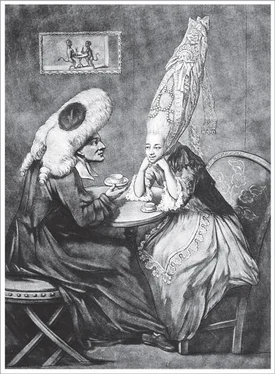Bill Bryson - At Home
Здесь есть возможность читать онлайн «Bill Bryson - At Home» весь текст электронной книги совершенно бесплатно (целиком полную версию без сокращений). В некоторых случаях можно слушать аудио, скачать через торрент в формате fb2 и присутствует краткое содержание. Жанр: Старинная литература, на английском языке. Описание произведения, (предисловие) а так же отзывы посетителей доступны на портале библиотеки ЛибКат.
- Название:At Home
- Автор:
- Жанр:
- Год:неизвестен
- ISBN:нет данных
- Рейтинг книги:4 / 5. Голосов: 1
-
Избранное:Добавить в избранное
- Отзывы:
-
Ваша оценка:
- 80
- 1
- 2
- 3
- 4
- 5
At Home: краткое содержание, описание и аннотация
Предлагаем к чтению аннотацию, описание, краткое содержание или предисловие (зависит от того, что написал сам автор книги «At Home»). Если вы не нашли необходимую информацию о книге — напишите в комментариях, мы постараемся отыскать её.
At Home — читать онлайн бесплатно полную книгу (весь текст) целиком
Ниже представлен текст книги, разбитый по страницам. Система сохранения места последней прочитанной страницы, позволяет с удобством читать онлайн бесплатно книгу «At Home», без необходимости каждый раз заново искать на чём Вы остановились. Поставьте закладку, и сможете в любой момент перейти на страницу, на которой закончили чтение.
Интервал:
Закладка:
Relief was infamously slow to come. Months after the starving had started, Sir Robert Peel, the British prime minister, was still urging caution. “There is such a tendency to exaggeration and inaccuracy in Irish reports that delay in acting on them is always desirable,” he wrote. In the worst year of the potato famine, London’s fish market, Billingsgate, sold 500 million oysters, 1 billion fresh herrings, almost 100 million soles, 498 million shrimps, 304 million periwinkles, 33 million plaice, 23 million mackerel, and other similarly massive amounts—and not one morsel of any of it made its way to Ireland to relieve the starving people there.
The greatest part of the tragedy is that Ireland actually had plenty of food. The country produced great quantities of eggs, cereals, and meats of every type, and brought in large hauls of food from the sea, but almost all went for export. So 1.5 million people needlessly starved. It was the greatest loss of life anywhere in Europe since the Black Death.
• CHAPTER V •
THE SCULLERY AND LARDER
Among the many small puzzles of the Old Rectory as it would have been originally is that there wasn’t anywhere much for the servants to put themselves when they weren’t working. The kitchen was barely big enough for a table and a couple of chairs, and the conjoined scullery and larder, where I have brought you now, were smaller still.*
As with the kitchen, these were rooms that the rector Mr. Marsham almost certainly entered diffidently, if at all, for this was very much the servants’ realm—though it wasn’t much of a realm. By the standards of the day, the servants’ area was curiously deficient for a rectory. At Barham Rectory in Kent, built at about the same time, the architect gave the servants not only a kitchen, larder, and scullery but also a pantry, a storeroom, a coal store, miscellaneous cupboards, and, crucially, a housekeeper’s room, which was clearly meant for retreat and relaxation.
What makes all this rather hard to figure is that the house as built doesn’t always match up with the house that Edward Tull designed. Mr. Marsham evidently suggested (or perhaps even insisted upon) some substantial revisions—and not altogether surprisingly, for Tull’s design for him contained a number of arresting peculiarities. Tull stuck the principal entrance on the side of the house, for no logical or deducible reason. He put a water closet on the main staircase landing—a truly odd and irregular spot—leaving the stairs without windows so that they would have been as dark as a cellar even in daytime. He designed a dressing room to go with the master bedroom but failed to include a connecting door. He built an attic that had no stairs to it but did have an excellent door to nowhere.
Most of the more wayward of these ideas were revised out of the house at some unknown point before or during construction. In the end, the principal entrance was placed more conventionally on the front of the house, not the side. The water closet was never built. The staircase was provided with a large window that still pleasantly bathes the stairs in sunlight when there is sunlight to be had, and provides a lovely view of the church beyond. Two extra rooms—a study downstairs and additional bedroom or nursery above—were added. Altogether, the house as built is quite different from the house that Tull designed.
Out of all the changes, one is particularly intriguing. In Tull’s original plans, the area now occupied by the dining room was much smaller and included space for a “Footman’s Pantry”—what clearly would have been a room for the servants to eat and rest in. That was never built. Instead the dining room was roughly doubled in size to fill the entire space. Why the bachelor rector decided to deprive his employees of a place to relax and instead give himself a really spacious dining room is of course impossible to say across such a distance of time. The upshot is that the servants had nowhere comfortable to sit when they weren’t working. It may be that they hardly sat at all. Servants often didn’t.
Mr. Marsham kept three servants: the housekeeper, Miss Worm; the village girl who worked as an underservant, Martha Seely; and a groom and gardener named James Baker. Like their master, all were unmarried. Three servants to look after one bachelor clergyman might seem excessive to us, but it wouldn’t have seemed so to anyone in Marsham’s day. Most rectors kept at least four servants, and some had ten or more. It was an age of servants. Households had servants the way modern people have appliances. Common laborers had servants. Sometimes servants had servants.
Servants were more than a help and convenience; they were a vital indicator of status. Guests at dinner parties might find that they had been seated according to the number of servants they kept. People held on to their servants almost for dear life. Even on the American frontier and even after she had lost almost everything in a doomed business venture, Frances Trollope, mother of the novelist Anthony Trollope, kept a liveried footman. Karl Marx, living in chronic indebtedness in Soho and often barely able to put food on the table, employed a housekeeper and a personal secretary. The household was so crowded that the secretary—a man named Pieper—had to share a bed with Marx. (Somehow, even so, Marx managed to put together enough private moments to seduce and impregnate the housekeeper, who bore him a son in the year of the Great Exhibition.)
So servitude was a big part of life for a great many people. By 1851, one-third of all the young women in London—those aged from about fifteen to twenty-five—were servants. Another one in three was a prostitute. For many, that was about all the choice there was. The total number of servants in London, male and female, was greater than the total populations of all but the six largest English cities. Service was very much a female world. Females in service in 1851 outnumbered males by ten to one. For women, however, seldom was it a job for life. Most left the profession by the age of thirty-five, usually to get married, and very few stayed in any one job for more than a year or so. That is little wonder, as we shall see. Being a servant was generally hard and thankless work.
Staff sizes, as you would expect, varied enormously, but at the upper end of the scale they were usually substantial. A large country house typically had forty indoor staff. The bachelor Earl of Lonsdale lived alone but had forty-nine people to look after him. Lord Derby had two dozen just to wait at dinner. The first Duke of Chandos kept a private orchestra for his mealtimes, though he managed to get extra value out of some of his musicians by making them do servants’ work as well; a violinist, for instance, was required to give his son his daily shave.
Outdoor staff swelled the ranks further, particularly if the owners did a lot of riding or shooting. At Elveden, the Guinness family estate in Suffolk, the household employed sixteen gamekeepers, nine underkeepers, twenty-eight warreners (for culling rabbits), and two dozen miscellaneous hands—seventy-seven people in all—just to make sure they and their guests always had plenty of flustered birds to blow to smithereens. Visitors to Elveden managed to slaughter over a hundred thousand birds every year. The sixth Baron Walsingham once single-handedly shot 1,070 grouse in a day, a toll that has not been bettered and we may reasonably hope never is. (Walsingham would have had a team of loaders providing him with a steady supply of loaded guns, so managing to fire the requisite number of shots was easy. The real challenge would have been in keeping up a steady flow of targets. The grouse were almost certainly released a few at a time from cages. For all the sport in it, Walsingham might just as well have fired into the cages and given himself more time for tea.)
Читать дальшеИнтервал:
Закладка:
Похожие книги на «At Home»
Представляем Вашему вниманию похожие книги на «At Home» списком для выбора. Мы отобрали схожую по названию и смыслу литературу в надежде предоставить читателям больше вариантов отыскать новые, интересные, ещё непрочитанные произведения.
Обсуждение, отзывы о книге «At Home» и просто собственные мнения читателей. Оставьте ваши комментарии, напишите, что Вы думаете о произведении, его смысле или главных героях. Укажите что конкретно понравилось, а что нет, и почему Вы так считаете.












